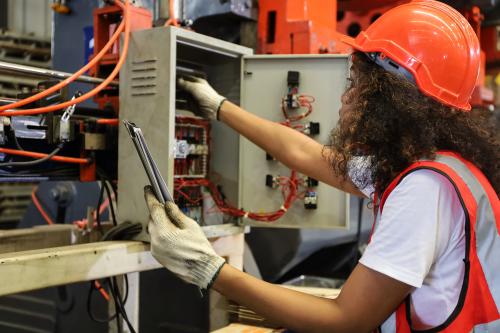When a bridge falls, when a water main fails, or when a train crashes, news crews and commentators report on the sorry state of our nation’s infrastructure. Policymakers on both sides of the aisle say we need to do something to fix our roads and rails, our ports and pipes. This flurry of activity lasts for a few days, but then little to nothing happens.
Why isn’t there more action?
Despite infrastructure’s fundamental role in the health and safety of the American people and the economy, the United States has underinvested for decades. Today, infrastructure spending as a share of gross domestic product is about 2.5 percent, much lower than the 3.9 percent in peer countries such as Canada, Australia, and South Korea. The figure for Europe as a whole is closer to 5 percent and between 9 and 12 percent for China.
The McKinsey Global Institute estimates that the United States should spend at least an additional $150 billion a year on infrastructure through 2020 to meet its needs. This investment is expected to add about 1.5 percent to annual GDP and create at least 1.8 million jobs.
Unfortunately, the federal government has not taken the actions required to reinvest in our nation’s infrastructure. For the foreseeable future, federal support for programs such as the Highway Trust Fund and State Revolving Funds for water will likely continue to face cuts and budgetary shortfalls.
Other experiments, such as the National Infrastructure Bank (though noteworthy), seem too complex and politically challenging in the current legislative environment. Furthermore, given the rise in interest payments, increases in entitlement spending, and decline in traditional sources of government revenue such as the gasoline tax, competition for limited resources is fierce.
So where should we focus our limited dollars?
For one, health and safety should be paramount. People should not have to wonder whether the bridge they are on or the train they are in presents a threat. Here we see cities such as Seattle and Boston responding with so-called Vision Zero efforts that take aim at the safety and security of the transportation network. Based on the Swedish principle that “life and health can never be exchanged for other benefits within the society,” the goal is to eliminate all traffic deaths and injuries.
High-profile natural disasters such as Hurricane Sandy also elevated the profile of the nation’s water-infrastructure challenges. Overwhelmed water systems, washed out roads, shorted electrical circuitry, and flooded train stations not only highlighted the economic resilience of these networks but also the poor and aging condition of many of these important systems.
And herein may lie some hope, because as a result, a whole range of new investments and practices are being deployed to rebuild our water systems. Cities such as Philadelphia are working to capture storm and rain water rather than building expensive infrastructure to channel it away. New York plans to invest $2.4 billion over the next 18 years in this “green” infrastructure, such as rooftop vegetation and porous pavements and soils, to make the city more permeable.
But what about Amtrak? Completely fixing the nation’s beleaguered intercity rail provider won’t be easy, but 2015 could be a pivotal year. The federal law that governs Amtrak expires soon. New initiatives to share the costs for operating long-distance trains are percolating. There is also a push to allow the revenues generated on Amtrak’s heavily traveled Northeast Corridor to be reinvested back in between Washington and Boston, rather than propping up less profitable routes elsewhere. Let’s hope Congress goes along, prompted by the horrible tragedy in Philadelphia last week.
The accident will also ignite debate around the federal mandate for the installation of “positive train control” technology. This safety device enables the train tracks to talk to the trains. It can not only warn of hazardous conditions ahead but can also take control if the operator fails to do so. It appears that if PTC had been installed in the stretch of track in Philadelphia, there’s a good chance the accident could have been prevented or mitigated. The National Transportation Safety Board recently found that the system could have similarly prevented 25 fatal train accidents in the United States over the last decade.
Make no mistake: This country has a lot to do to fix its infrastructure problems and to make the systems safer. It would be best for policymakers to be proactive and develop a modern vision for the kind of investments we need, and then identify and commit to paying for it over the long haul. It’s absolutely necessary, but it won’t be easy and will take some time. But that’s no excuse for doing nothing. The time for action is long past.
This commentary was originally published by the Think Tank blog.


Commentary
Op-edHigh costs of underfunding rail and other needs
May 19, 2015